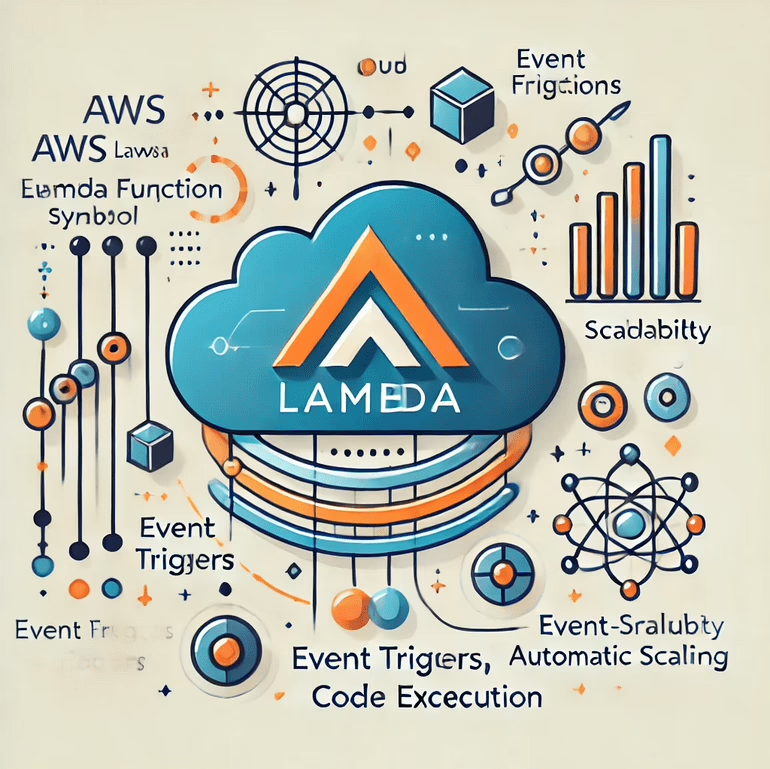Leveraging TimescaleDB for Efficient Time-Series Data Management:
Insights for Enterprises
In today’s data-driven world, the ability to efficiently manage and analyze time-series data is critical for many industries. Whether it’s monitoring IoT devices, tracking financial markets, or managing sensor data, time-series data plays a crucial role in enabling businesses to make informed decisions. However, the challenges associated with storing, querying, and processing vast amounts of time-stamped data can be daunting. Enter TimescaleDB, an open-source, distributed relational database designed specifically to tackle these challenges head-on.
In this article, we’ll explore the unique capabilities of TimescaleDB, discuss its significance in the context of modern data management, and highlight how Curate Consulting Services can assist organizations in finding the specialized talent needed to effectively implement and optimize this powerful tool.
Understanding Time-Series Data and Its Challenges
Time-series data refers to data points that are collected or recorded at specific time intervals. This type of data is prevalent across a wide range of applications, including:
- IoT (Internet of Things): Monitoring sensor data from smart devices, such as temperature, humidity, or motion sensors.
- Financial Analysis: Tracking stock prices, trading volumes, and other financial metrics over time.
- Monitoring and Alerting: Recording system metrics, such as CPU usage, memory consumption, or network traffic, for monitoring and alerting purposes.
- Log Analysis: Analyzing log data from applications, servers, or network devices to detect patterns and anomalies.
The primary challenge with time-series data lies in its sheer volume and the need for efficient storage, querying, and retrieval. As the amount of data grows, traditional relational databases often struggle to keep up with the demands of high-volume, high-velocity time-series workloads. This is where TimescaleDB shines.
What is TimescaleDB?
TimescaleDB is an open-source, distributed relational database built on top of PostgreSQL. It extends PostgreSQL’s capabilities by introducing specialized features and optimizations for handling time-series data. By leveraging the robustness and familiarity of PostgreSQL, TimescaleDB provides users with the best of both worlds: the power and flexibility of a relational database combined with the efficiency and scalability required for time-series workloads.
Time-Series Data Model
At the core of TimescaleDB is its time-series data model. In this model, each data point is identified by a timestamp and can have one or more associated attributes or fields. For example, a time-series dataset for a weather station might include data points with timestamps, temperature readings, humidity levels, and wind speeds.
TimescaleDB’s time-series data model is designed to handle the unique characteristics of time-series data, such as the need for efficient time-based partitioning, indexing, and querying. This ensures that even as the volume of data grows, TimescaleDB can continue to deliver fast and reliable performance.
Hypertables: Scaling Time-Series Data
One of the key innovations in TimescaleDB is the concept of hypertables. Hypertables are a way to organize and manage time-series data efficiently. In essence, a hypertable is a logical abstraction that partitions the data across time intervals and, optionally, other dimensions such as location or device ID.
For example, if you’re collecting sensor data from thousands of IoT devices, you might create a hypertable in TimescaleDB that partitions the data by time and device ID. This allows TimescaleDB to distribute the data across multiple physical tables, or chunks, optimizing both storage and query performance.
Hypertables enable TimescaleDB to handle large volumes of time-series data without compromising on performance. As new data arrives, TimescaleDB automatically manages the creation and organization of these chunks, ensuring that queries remain fast and efficient.
Native SQL Support
One of the major advantages of TimescaleDB is its native support for SQL. Because TimescaleDB is built on top of PostgreSQL, it inherits PostgreSQL’s robust SQL capabilities, allowing users to interact with time-series data using familiar query constructs.
For organizations already using PostgreSQL, this means that adopting TimescaleDB doesn’t require learning a new query language or rearchitecting existing applications. Developers and data analysts can leverage their existing SQL skills to query, analyze, and visualize time-series data, making the transition to TimescaleDB smooth and cost-effective.
For example, a financial analyst can use standard SQL queries to calculate moving averages, perform trend analysis, or generate time-based reports directly from TimescaleDB. The ability to use SQL for time-series data analysis significantly lowers the barrier to entry, making TimescaleDB an attractive option for a wide range of use cases.
Automatic Data Retention and Compression
Managing storage costs and ensuring compliance with data retention regulations are critical concerns for organizations dealing with time-series data. TimescaleDB addresses these concerns with built-in features for automatic data retention and compression.
With TimescaleDB, users can define data retention policies that specify how long data should be retained before it is automatically removed. This is particularly useful for applications where only the most recent data is relevant, such as monitoring and alerting systems. By automatically removing old data, TimescaleDB helps organizations manage storage costs and ensure compliance with data retention requirements.
In addition to data retention, TimescaleDB also supports data compression. Compression allows TimescaleDB to reduce the storage footprint of time-series data, making it possible to store more data without requiring additional hardware. TimescaleDB’s compression techniques are optimized for time-series data, ensuring that queries remain fast and responsive even as data is compressed.
Continuous Aggregations for Real-Time Insights
In many time-series applications, real-time insights are crucial for making timely decisions. However, aggregating large volumes of data on-the-fly can be computationally expensive and slow. To address this challenge, TimescaleDB introduces the concept of continuous aggregations.
Continuous aggregations are precomputed aggregates that are automatically updated as new data arrives. For example, if you’re monitoring CPU usage across hundreds of servers, you might define a continuous aggregation that calculates the average CPU usage for each server over one-minute intervals. As new data points are ingested, TimescaleDB automatically updates the aggregation, ensuring that queries return the most up-to-date results without the need for expensive on-the-fly calculations.
This feature is particularly valuable for applications that require real-time dashboards or alerting systems. By leveraging continuous aggregations, organizations can achieve near-real-time insights into their time-series data, enabling faster decision-making and more proactive responses to emerging trends.
Distributed and Scalable Architecture
As the volume of time-series data grows, scalability becomes a critical factor. TimescaleDB is designed to scale out horizontally, allowing organizations to distribute data and query workloads across multiple nodes in a cluster.
In a distributed TimescaleDB deployment, data is automatically distributed across nodes based on the partitioning strategy defined by the hypertable. This ensures that each node only needs to manage a subset of the data, improving both storage efficiency and query performance.
TimescaleDB’s distributed architecture also provides fault tolerance and high availability, making it suitable for mission-critical applications. By distributing data across multiple nodes, TimescaleDB ensures that even if one node fails, the system can continue to operate without data loss or significant downtime.
Gap Filling and Advanced Analytics
Handling missing data points is a common challenge in time-series databases. Whether due to network issues, sensor failures, or other factors, missing data can introduce gaps in time-series datasets that complicate analysis.
TimescaleDB provides gap-filling capabilities that allow users to handle missing data points efficiently. For example, if you’re analyzing temperature data from a network of sensors and one of the sensors goes offline, TimescaleDB can automatically fill in the missing data points with interpolated values or predefined defaults. This ensures that your analyses remain accurate and consistent, even in the presence of incomplete data.
In addition to gap filling, TimescaleDB supports a wide range of advanced analytics functions, including moving averages, exponential smoothing, and time-based windowing. These functions allow organizations to perform sophisticated analyses directly within the database, reducing the need for external data processing pipelines and streamlining the overall workflow.
Integration with Visualization Tools
Visualization is a key component of time-series data analysis, and TimescaleDB is designed to integrate seamlessly with popular visualization tools such as Grafana. By connecting TimescaleDB to a visualization platform, organizations can create custom dashboards that provide real-time insights into their time-series data.
For example, a DevOps team might use TimescaleDB in conjunction with Grafana to monitor system metrics across a fleet of servers. With real-time visualizations of CPU usage, memory consumption, and network traffic, the team can quickly identify and respond to performance issues before they impact users.
The ability to integrate TimescaleDB with visualization tools also makes it easier to communicate insights to non-technical stakeholders. By presenting time-series data in a visually intuitive format, organizations can ensure that decision-makers have the information they need to make informed choices.
How Curate Consulting Services Can Help
Implementing a powerful tool like TimescaleDB requires specialized expertise, particularly when dealing with large-scale, mission-critical time-series workloads. Curate Consulting Services is here to help organizations navigate the complexities of time-series data management by providing expert consulting and talent acquisition services.
Finding Specialized Talent
One of the most significant challenges organizations face when adopting new technologies is finding the right talent to implement and manage them. Curate Consulting Services specializes in identifying and recruiting top-tier talent with expertise in time-series databases, data analytics, and distributed systems. Whether you’re looking for a database architect to design your TimescaleDB deployment or a data engineer to optimize your time-series data pipeline, Curate Consulting Services can connect you with the right professionals.
By leveraging our extensive network of industry experts, we ensure that your organization has access to the specialized skills needed to successfully implement and optimize TimescaleDB. Our talent acquisition services are tailored to meet the unique needs of your business, ensuring that you have the right team in place to achieve your goals.
Tailored Consulting Solutions
Every organization has its own unique requirements, and a one-size-fits-all approach rarely works when it comes to technology implementation. Curate Consulting Services offers tailored consulting solutions designed to meet the specific needs of your business. From initial assessments and strategy development to implementation and ongoing support, we work closely with your team to ensure that TimescaleDB is deployed and configured to deliver maximum value.
Our consulting services include:
- Architecture Design: We help you design a scalable and efficient architecture for your TimescaleDB deployment, taking into account factors such as data volume, query performance, and fault tolerance.
- Performance Optimization: Our experts can analyze your existing time-series data pipeline and identify opportunities for optimization, ensuring that your TimescaleDB deployment runs at peak performance.
- Training and Support: We provide comprehensive training and support to ensure that your team is fully equipped to use TimescaleDB effectively. This includes hands-on training sessions, documentation, and ongoing support to address any questions or issues that arise.
Achieving Business Success with TimescaleDB
TimescaleDB is a powerful tool that enables organizations to efficiently manage and analyze time-series data. Its combination of scalability, performance, and ease of use makes it an ideal choice for a wide range of applications, from IoT and financial analysis to monitoring and alerting systems.
However, to fully realize the benefits of TimescaleDB, organizations need the right talent and expertise. Curate Consulting Services is here to help, offering specialized talent acquisition and tailored consulting solutions to ensure that your TimescaleDB implementation is a success. By partnering with Curate Consulting Services, you can unlock the full potential of TimescaleDB, driving efficiency, scalability, and innovation in your time-series data management processes.
Conclusion
In a world where data is growing at an unprecedented rate, the ability to manage and analyze time-series data efficiently is more important than ever. TimescaleDB offers a robust solution to the challenges of time-series data management, providing organizations with the tools they need to store, query, and analyze vast amounts of time-stamped data.












